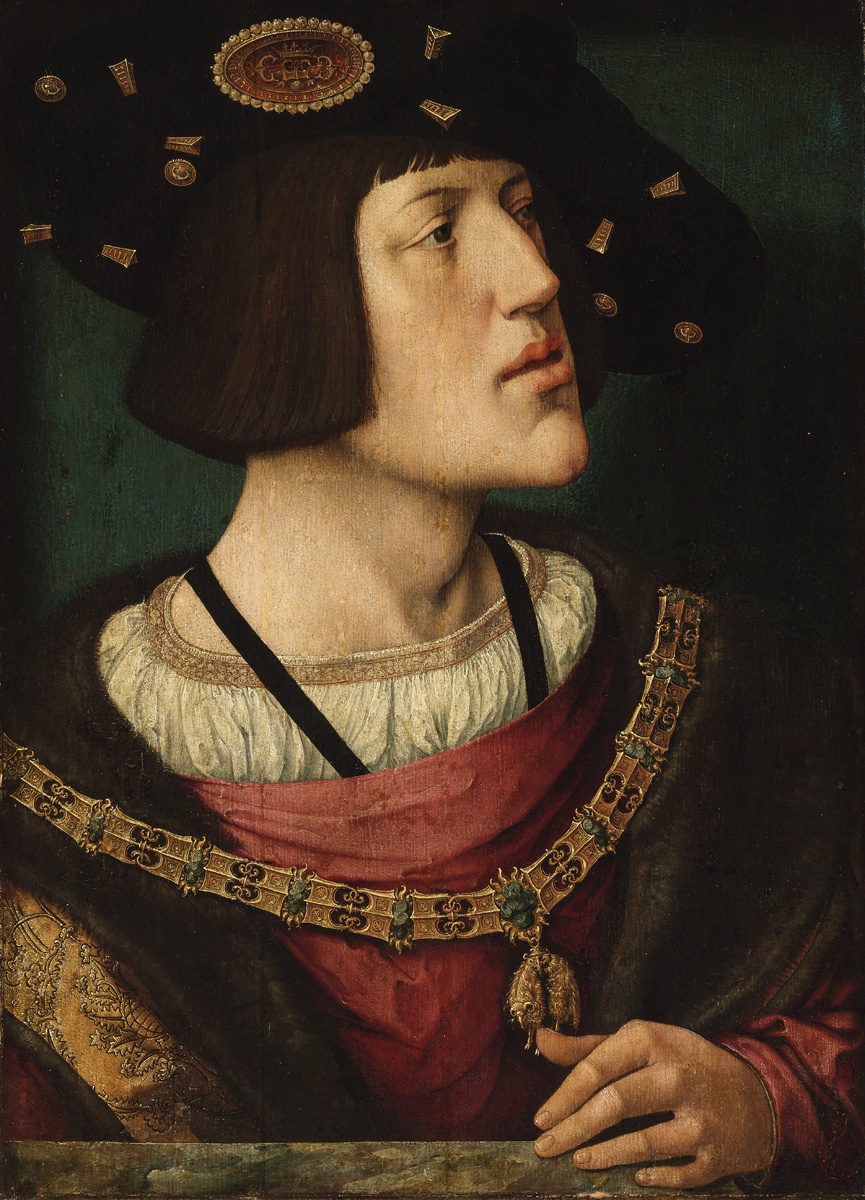Emperor Charles V, perhaps the most powerful ruler of all time, had an empire on which, it was said, the sun never set. He ruled over Spain, Germany, the Low Countries, Southern Italy, and had extensive colonies in America and Asia. His portrait was painted by the greatest artists of Europe, from Dürer to Titian, so that through copies of the portraits, albeit metaphorically, he could be present in every corner of his empire. Yet Charles was not a particularly attractive man, as attested to by contemporary accounts: ’His lower jaw is unwieldy and protrudes, as if it were not a natural part of him, but some additional imitation; and so if he closes his mouth, a space the size of a row of teeth is left between the upper and lower teeth.’ One of Charles’s first portraitists was Barend van Orley in Brussels. This image was made about the time the adolescent young man had been elected (at the cost of enormous bribes) Holy Roman Emperor. However, there is no reference here to this title or to the Spanish throne he had inherited earlier; only the royal emblem of Burgundy, the flint and steel, appears on the large hat brooch, between the large doubled initial of his name, and around his neck hangs the badge of the famous order of the golden fleece. Van Orley created an ideal fusion of Northern and Mediterranean styles to lend an imposing realistic air to his portraits: the forms of the body are captured with masterly Italianate plasticity, while the jewels and clothes have a Netherlandish richness of detail.Axel Vécsey
en

